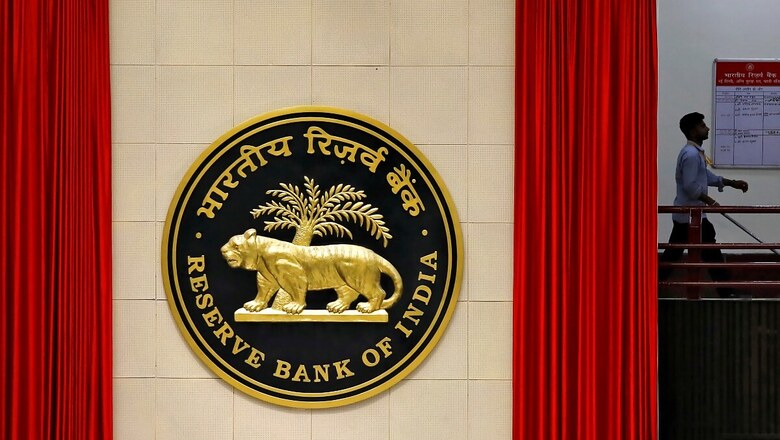
views
Adjustments in banks' deposit and lending rates in response to changes in the repo rate improved during 2019-20, especially in the second half of the year, the RBI said on Tuesday. This was catalysed by the mandated linking of the interest rates on new loans to certain sectors such as personal and micro, small and medium enterprises (MSME), effective October 2019, to an external benchmark, the Reserve Bank said in its annual report. The external benchmark can be the policy repo rate, three-month, six-month T-bill rates or any other benchmark published by the Financial Benchmarks India (FBIL).
During October 2019-June 2020, the weighted average lending rate of domestic (public and private sector) banks declined in respect of fresh rupee loans sanctioned for housing loans by 104 basis points (bps), vehicle loans by 102 bps, other personal loans by 115 bps and MSME loans by 198 bps, the report said. Following the introduction of the external benchmark-based system of pricing of loans, 36 out of 66 banks adopted the policy repo rate as the external benchmark for floating rate loans to the retail and MSME sectors.
Seven banks have adopted sector-specific benchmarks. The Monetary Policy Committee (MPC) has cumulative reduced the key short-term lending rate (repo) by 250 basis points since February 2019. "During the easing cycle since February 2019, transmission has been faster in respect of fresh rupee loans sanctioned by private sector banks vis-a-vis public sector banks.
"This was similar to the experience during the tightening cycle of June 2018-January 2019 when the transmission was quicker for private sector banks," said RBI's Annual Report 2019-20. The weighted average lending rate (WALR) on fresh rupee loans of private sector banks is usually higher than that of public sector banks, reflecting higher cost of funds. The report further said the share of loans to sectors such as agriculture, MSME, vehicle and credit cards in total loans sanctioned by private sector banks was higher than that of public sector banks during June 2020.
The sectoral WALRs in respect of fresh rupee loans to these sectors were also higher than the respective WALRs of public sector banks. "Monetary transmission remained uneven across sectors due to idiosyncratic features," it added. During the current easing cycle so far (February 2019-June 2020), interest rates on outstanding loans declined for majority of the sectors, including agriculture, industry (large), infrastructure, trade, housing and education, the report said.
The transmission to fresh rupee loans sanctioned has been better in respect of sectors such as housing, other personal loans and MSME loans, where new floating rate loans have been linked to an external benchmark, it noted. "The mandated linking of interest rates on new floating rate loans to external benchmark in respect of personal and MSME loans is leading to faster monetary transmission, although it remains uneven across sectors," the RBI said.
The central bank added that it would persevere with its initiatives to further improve monetary transmission. The report also said that overall, the Reserve Bank's various operations (including forex purchases, open market operations, and long term repo operations) injected durable liquidity of Rs 5.76 lakh crore in 2019-20 and Rs 3.09 lakh crore in Q1 2020-21.



















Comments
0 comment